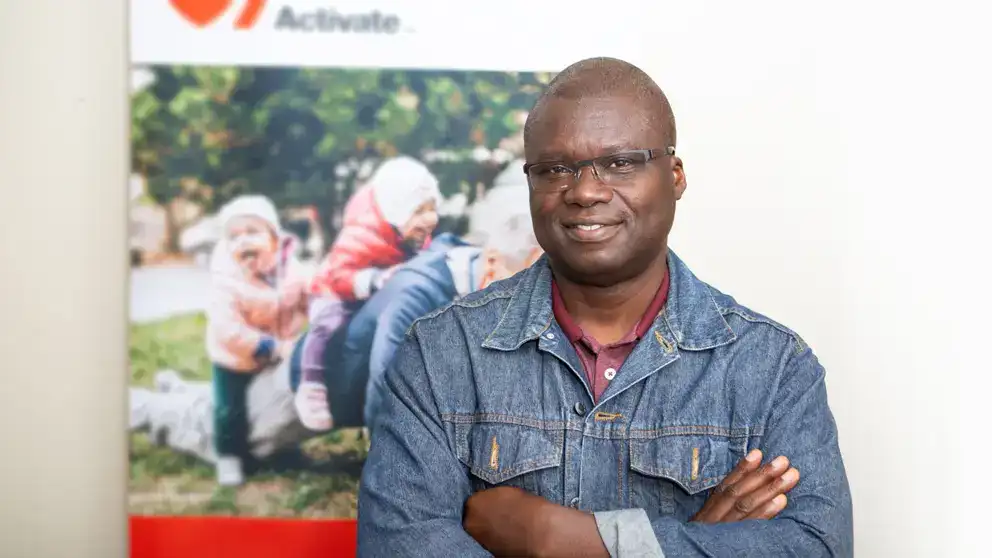Babatunji Farinloye is feeling great. He has made physical activity a habit, aiming for at least 10,000 steps a day, and he is eating more vegetables and fruit, avoiding some of the processed foods he used to buy.
He credits his lifestyle changes to Activate, an innovative wellness program led by Heart & Stroke to help people reduce their risk of high blood pressure by focusing on regular exercise, healthy eating and stress management.
High blood pressure, also called hypertension, is the number one risk factor for stroke and a major risk factor for heart disease.
Babatunji is one of almost 4,600 participants who significantly cut their risk of developing high blood pressure through Activate. The program wrapped up this year after a two-year pilot in Ontario, British Columbia and Saskatoon.
It was developed to help pre-hypertensive Canadians stop their blood pressure from going up, but results show that many participants beat this goal by on average significantly lowering their blood pressure.
Tracking progress
Babatunji, a 52-year-old accountant, found the program’s tracking tools motivated him to improve his physical activity, eating habits and sleep. He took advantage of the free two-month YMCA membership, including personal training. “I already belonged to a gym, but getting guidance on the correct things to do was good.”
Consulting a dietitian at Loblaws, another Activate benefit, helped Babatunji change his approach to grocery shopping. “Now I know what aisles to not go to! I know what to check on the labels and what I shouldn’t be buying.”
Innovative funding model
Activate was launched in partnership with the MaRS Centre for Impact Investing and the Public Health Agency of Canada (PHAC). Collaborators included private investors as well as private and community partners (Loblaws Companies Limited and the YMCA). The program was funded using an innovative model called a social impact bond (SIB), where private investors provide the up-front capital to develop and deliver the program, and government funds repay the investors if the program is successful.
The program recruited people over 40 who had blood pressure within a specific range (121-139 systolic), and who did not take medication for high blood pressure.
I know what to check on the labels and what I shouldn’t be buying.
“We are thrilled with the program results – controlling blood pressure saves lives but changing behaviour to do that is difficult,” says Doug Roth, CEO, Heart & Stroke. “We looked at the best evidence, brought together the right partners, and relied on a new and innovative funding mechanism all of which allowed us to provide the program participants with the support, knowledge and tools to make healthy changes.”
COVID-19 presented challenges in the final phase of the program. “Once the pandemic hit, we had to quickly adapt with the goal of keeping participants engaged and supported from the safety and comfort of their homes,” says Roth. “We worked with our partners to seamlessly transition into a fully virtual program and provide additional supports.” These included virtual exercise classes from the Y and sending participants an approved blood pressure monitor so they could check their blood pressure at home.
Two years after he completed the program, Babatunji’s blood pressure is at the low-risk level of 120/80. “With the program I was able to form new habits and acquire new tastes,” he says. “By holding me accountable, Activate helped me meet my goals.”
- Learn more about high blood pressure.
